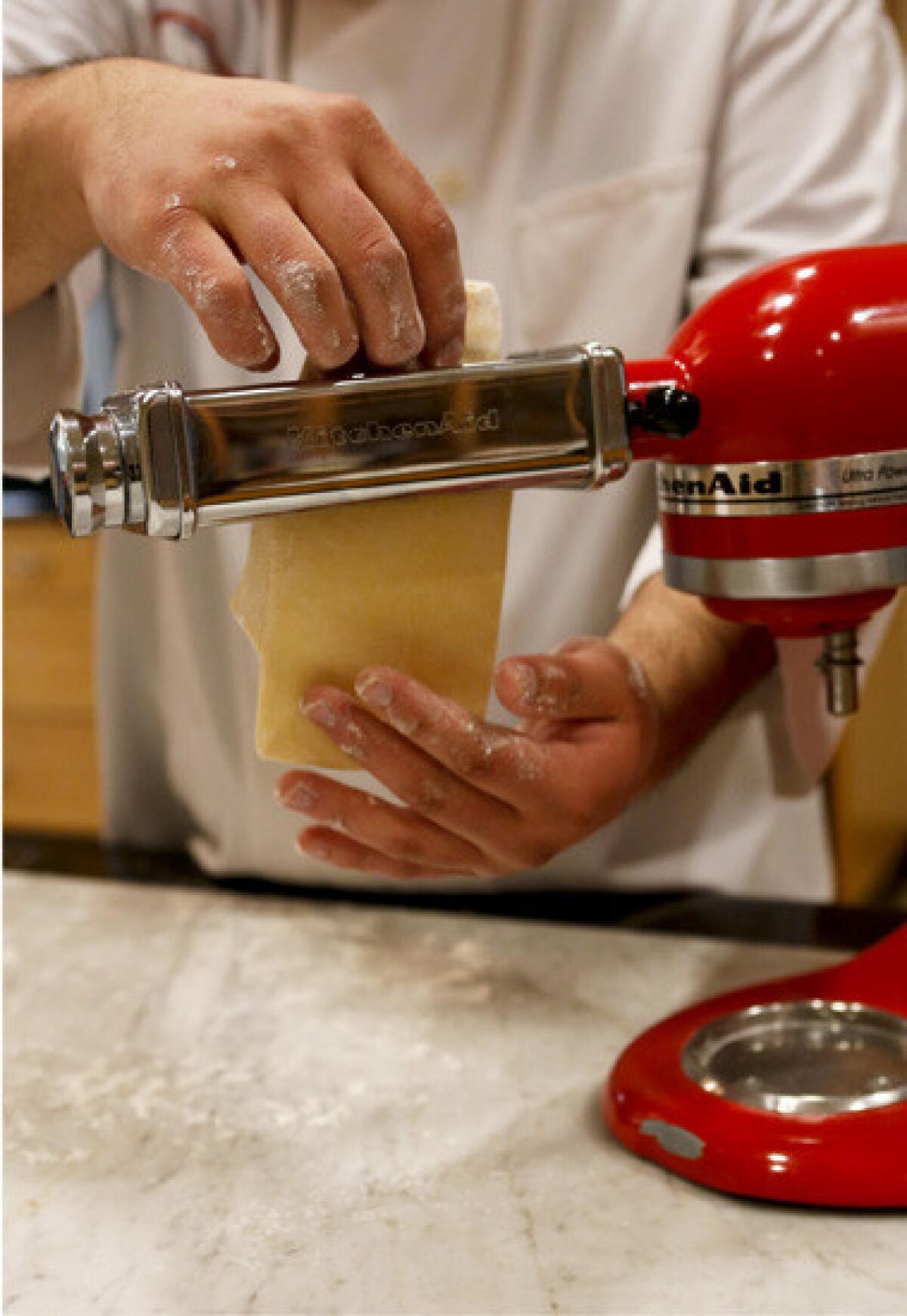How to make fresh pasta

I have gone through periods of excess when it comes to fresh pasta. When I first started making it many years ago, I got so carried away that I’d make fettuccine for dinner every night when I got home from work. It wasn’t very good fettuccine, mind you — fresh pasta needs time to relax before rolling — but it was a whole lotta fettuccine.
Lately I have found myself tipping back over that cliff again, making fresh pasta over and over. Here are some tips.
Pick up a pasta roller attachment for a stand mixer. It makes the job so much easier, eliminating the “third hand” problem of the manual versions entirely (one hand to feed the dough through the roller, one hand to turn the crank and somehow a third hand to catch the rolled-out sheet on the other side).
I also find it easier to make the dough in a food processor. I realize that in theory it’s simple enough to mound the dough on a work table, beat in the eggs and knead. But it’s messy. I made the two methods side by side. The food processor dough was much easier to work and just as fine in result.
Pulse just until the flour and egg mixture starts to clump together, then knead it by hand to make a cohesive dough.
Wrap the kneaded dough tightly in plastic wrap and refrigerate for at least half an hour to rest. You’ll know it’s ready to roll when you poke an indentation with your finger and it doesn’t immediately spring back.
Start the rolling process by kneading the dough again with the machine. Flatten it, fold it in thirds as you would a letter and feed it through the rollers on the widest setting. Repeat until the dough feels satiny smooth. Then start thinning, using progressively thinner settings.
When rolling out the dough, flour it lightly but frequently, whenever it starts to feel moist. I usually lightly dust the dough with flour a couple of times during the machine kneading, and then again midway through the thinning. But if the dough is moist, you may need to do it more often.
If the sheet of dough becomes too long for you to handle comfortably, cut it in half and work with smaller portions. Keep the remainder lightly covered with plastic wrap to prevent drying out.
Once the dough is rolled and cut, you can cook it immediately and save it stretched out on kitchen towels until you’re ready to assemble the lasagna. Be sure to give it a good rinse as soon as it’s done cooking to get rid of the excess starch, and then squeegee the sheets between your fingers to get rid of any extra water.
—Russ Parsons
More to Read
Eat your way across L.A.
Get our weekly Tasting Notes newsletter for reviews, news and more.
You may occasionally receive promotional content from the Los Angeles Times.







